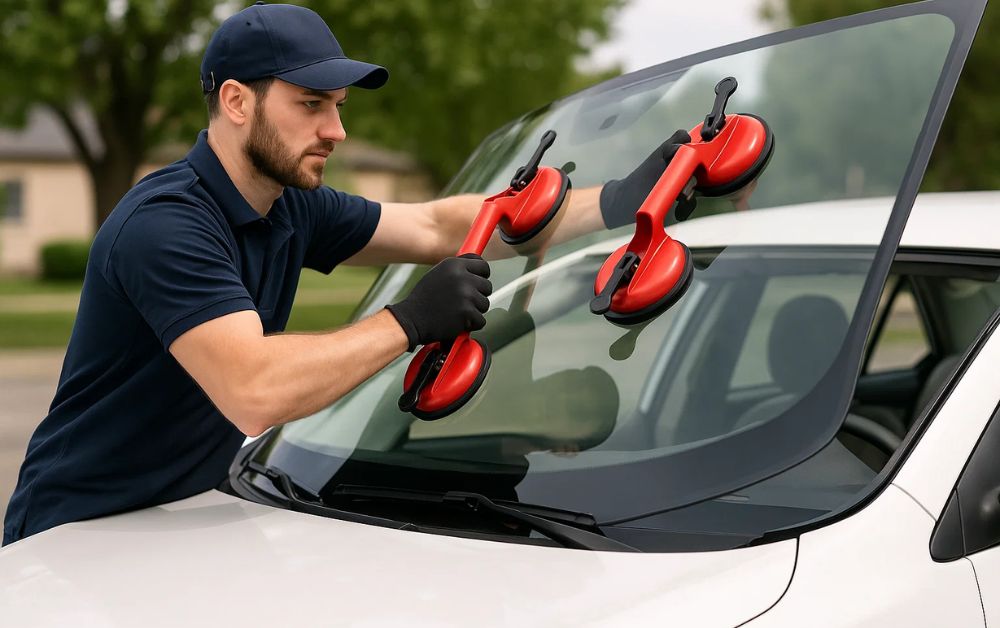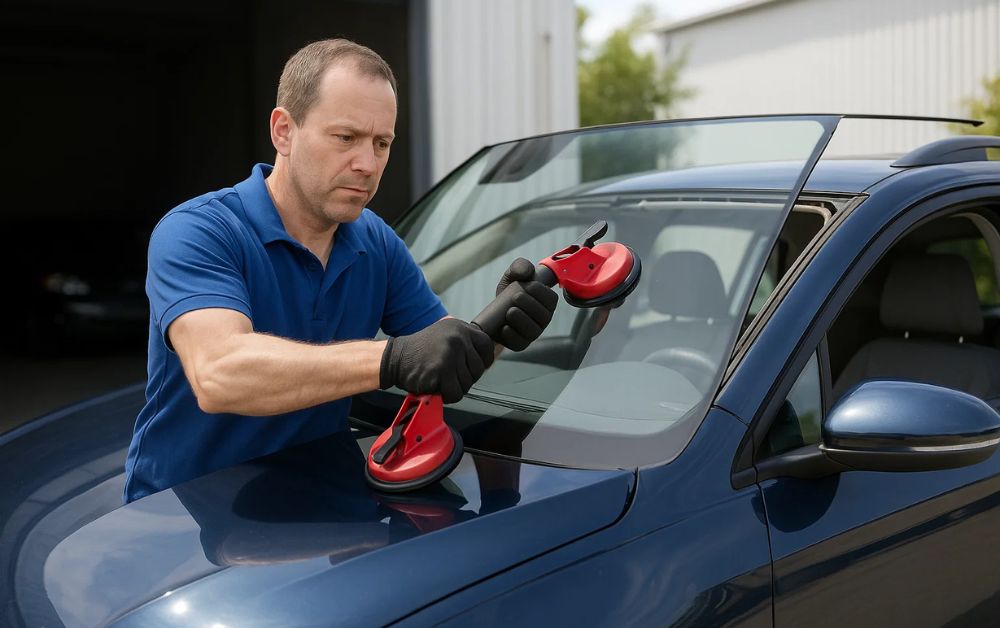Maintaining the integrity of a vehicle’s windows and windshields is essential for both safety and comfort. Damaged glass can impair visibility, compromise structural strength, and even affect the functioning of safety features such as airbags. When minor cracks or chips occur—or when a full replacement is necessary—it is crucial to rely on professional services.
This article explores how professionals repair or replace car glass, the techniques involved, and what vehicle owners can expect from a reliable service provider.

Understanding the Types of Damage
Before any repair or replacement begins, technicians assess the type and severity of the damage. Not all cracks or chips require the same approach.
- Small Chips and Cracks: Often caused by stones or debris, these can typically be repaired if they are minor and not in the driver’s line of sight.
- Large or Spreading Cracks: Extensive damage that compromises the structural integrity of the glass usually requires full replacement.
- Shattered or Broken Glass: This occurs in accidents or vandalism and necessitates complete glass replacement for safety reasons.
Proper assessment ensures that the most effective and safe method is chosen, avoiding unnecessary costs or risks.
The Glass Repair Process
Repairing small chips and cracks is a delicate process that restores the glass’s strength and clarity without removing it. Professionals generally follow these steps:
- Cleaning the Area: The damaged area is thoroughly cleaned to remove debris & moisture that could prevent proper bonding.
- Injecting Resin: A specialized resin is injected into the crack or chip using a precision tool.
- Curing the Resin: UV light or heat is applied to cure the resin, bonding it to the car glass and restoring its structural integrity.
- Polishing: The repaired area is polished to improve clarity and smooth the surface, making the damage less visible.
This method is fast, cost-effective, and helps prevent cracks from spreading, enhancing both safety and aesthetics.
Related read:- What Are the Essential Car Glass Safety Features Every Driver Should Know?
The Glass Replacement Process
When damage is extensive or compromises safety, a full replacement is necessary. The replacement process is more involved and includes:
- Removing the Damaged Glass: Technicians carefully remove the broken glass while protecting the vehicle’s interior and surrounding panels.
- Preparing the Frame: The frame is cleaned and inspected for rust, debris, or previous adhesive residue. Proper preparation ensures the new glass fits perfectly.
- Applying Adhesive: High-quality adhesives are applied to the frame to secure the new glass. Adhesives are selected based on manufacturer specifications and safety standards.
- Installing the New Glass: The new windshield, side window, or rear glass is carefully positioned and pressed into place.
- Curing Time: Adhesives require time to set properly. This curing period is essential for maintaining the structural integrity and safety of the vehicle.
Proper installation ensures that the vehicle meets safety regulations and functions correctly in everyday use.
Safety Checks and Calibration
Modern vehicles often have advanced features integrated with the glass, such as rain sensors, cameras, and heads-up displays. After installation, professionals perform:
- Alignment Checks: Ensuring the glass is perfectly aligned with the frame.
- Sensor Calibration: Rain sensors, lane departure cameras, and other systems are recalibrated for accurate functioning.
- Leak and Seal Testing: The new car glass is checked for air or water leaks to prevent future issues.
These steps are critical for ensuring that the vehicle remains safe and fully functional after repair or replacement.
Benefits of Professional Services
Relying on professional repair or replacement services offers multiple advantages:
- Safety Assurance: Certified technicians follow industry standards, ensuring the vehicle meets safety requirements.
- Quality Materials: Professionals use OEM or high-quality aftermarket glass, maintaining durability and clarity.
- Efficiency: Experienced teams can complete repairs or replacements quickly while minimizing inconvenience.
- Warranty and Reliability: Most reputable services provide warranties, giving vehicle owners peace of mind.
Attempting DIY repairs or using unqualified services can compromise safety and lead to higher long-term costs.

In Conclusion
Repairing or replacing car glass is a precise process that requires skill, the right tools, and high-quality materials. Professionals ensure that cracks and chips are safely repaired, while full replacements restore the vehicle’s integrity, safety, and appearance. Timely action not only protects passengers but also prolongs the lifespan of the vehicle’s windows and windshields.
For drivers in Abu Dhabi, Windmaster Autocare LLC offers expert repair and replacement services, delivering fast, reliable, & professional solutions to keep your vehicle safe and road-ready.
